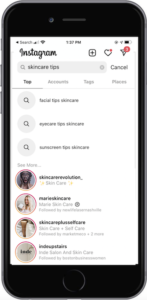A long time ago, in an internet marketing landscape far away, B2B marketers could get away with ignoring social media. But not anymore. Everything changed once social media took over the world. It’s now an indispensable part of B2B marketing strategy. Still, many companies struggle to find effective ways to connect with their customers on social platforms.
Brand storytelling: still one of the best ways to increase your brand awareness, reach new audiences, and attract more followers on social media. Storytelling gives you an opportunity connect with your audience to tell a story about your company and what it does. A story that resonates is a story that is remembered.
It’s not just that people love a good story. As humans, we’re hard-wired to make sense of the world in narrative terms. Stories get a hold of us in a way that context-free facts and figures never can. According to research, 92% of consumers want advertisements to tell a story. Not only do consumers want to hear a story, but they also want it to be a good story. 55% are more likely to purchase if they like the story.
As anyone who’s tried to write the next great fantasy epic can tell you, it’s not always easy creating a narrative that captivates audiences. That’s true whether we’re talking about a 500-page novel or an Instagram Story. To learn how to keep your leads hooked, let’s take a closer look at brand storytelling, why it works, and how to do it right.
Why Does Storytelling Work in Marketing?
If we couldn’t think in terms of stories — to put what we experience in the context of narrative — life would seem like a chaotic series of random events. Human brains are programmed to make stories out of experiences. As social animals, we also relate to the stories that other people tell us.
This premise is backed up by scientific research that shows that our brains produce oxytocin when we hear a good story. Oxytocin is a neurochemical that literally makes us feel good. Of course, just listing a sequence of events isn’t enough to make us feel like the story we’re hearing is good. Stories have themes, characters, and structure: a beginning, a middle, and an end.
A good story hits us right in the emotions. This matters for marketers because emotional experiences influence purchasing decisions more than dry information does. To turn a lead into a buyer, you need to make them feel emotion — and brand storytelling is one of the most effective ways to do that. It’s more effective than all the whitepapers, infographics, and statistics you can muster.
What is Brand Storytelling?
Brand storytelling is the process of constructing a narrative about your business that resonates with your prospective customers. Brand storytelling can be about your products, team, values, image, or anything else that makes your company unique. The key is that it all has to mean something to your audience. That is, the story has to be compelling.
When done right, brand storytelling builds and strengthens an emotional connection between your company and your customers. Brand storytelling can take place over any medium, including social media — where it turns out that non-traditional story forms work great. However you deliver it, you need to make sure the sense of narrative comes through, so your audience experiences it as a story.
Good brand storytelling conveys something meaningful about your company’s vision and purpose. It can be heartfelt, or funny, or captivating like a whodunit — just so long as it’s stirring the right emotions to keep the right audience invested in it.
What is Social Media Storytelling?
Brand storytelling on social media is about using the strengths of various social platforms to deliver your narrative content to your target audience. Different social media platforms sway toward different demographics and storytelling styles.
Some platforms lend themselves to spontaneous, meme-ified posts, while others lean toward more substantive, durable content. To connect with your audience—and, ideally, motivate them to share and engage with your story—you need the right content matched with the right platform.
For example, a text-dense image detailing your inspiration for starting your company isn’t optimal brand storytelling on Instagram or Snapchat. On Facebook or LinkedIn, however, that same content might find a receptive audience.
On social media, the old saying that “the medium is the message” is the truth — and that also goes for the messenger. Your official company social media account has the most authoritative “voice” for your brand, but it doesn’t have to be the only one. Employees and customers can also amplify your story by posting about the brand on their personal accounts.
How to Make Brand Storytelling on Social Media Work for You

Every brand has a unique story to tell, and there’s always a little luck and alchemy involved in finding a narrative that resonates. Here are a few guidelines that can lay the foundation for brand storytelling success on social media.
Develop Your Brand Story
A story has to have a clear focus to have a real impact. Jump around haphazardly, and the narrative gets lost. One way to get clarity is to remember to make the story about what the audience wants.
Your rags-to-riches story about building your company might be gripping to the average person, but what if your buyers are more concerned about your values and community outreach? Speak to what matters most to your potential customers.
Carefully develop your brand story to address your marketing goals, your audience’s needs, and the medium it will be conveyed in. Make sure it’s designed to have the impact you want, and has both structure and emotional heft.
Know Your Audience
How can you figure out what your audience wants if you don’t know who they are? Researching your leads and constructing customer personas can make it much easier to determine what kind of story will speak to them. Listen to feedback, monitor online conversations about your brand and products, and leverage the data in your CRM. This research will help you understand precisely who is buying from you and what their priorities are.
Create a Strategy
On social media, you don’t have a captive audience for your story. Attention spans are short, and other content is always just a click away. What you need is a strategy to ensure your story gets heard — by delivering it to your audience at the right time, in a format that meets their needs.
Once again, listening to your audience is vital. Fortunately, powerful tools exist to help ensure you don’t miss any relevant discussions. Once you know where they are and what they’re interested in, you need to create content that fits each platform: high-quality images for Instagram, bite-size content for Twitter, or longer think-pieces for LinkedIn.
Remember that your targets won’t see all of your content all at once or in the same sequence. Keep it consistent and authentic to ensure the critical elements of your message don’t get lost.
Create Resources & Valuable Content
Just because you’re telling a brand story doesn’t mean your content needs to be 100% pure entertainment. Content like instructional videos, how-to’s, games and contests, or downloadable tools can be part of a narrative that positions your brand as a trusted guide helping the customer on his journey to a solution. Doing this helps build a relationship that leads to sales.

Involve Your Audience
Few things get an audience more hooked into a story than feeling like they’re part of it. You can involve your audience by featuring customer testimonials or feedback in your content, inviting engagement and discussion, or talking about how your customers inspire you. As long as it fits with your narrative’s themes and primary message, it’s fair game.
Another way to do this is to place the customer at the center of the story. The story isn’t about you, the brand. It’s about the customer and how they interact with your brand to transform their business. Consider what problems your customers have and how your brand solves them — and make that the story.
Writing your audience into the narrative evokes their emotions. This makes them more invested in your story, and more likely to remember it.
Be Visual
Even when you’re posting on text-friendly social platforms, don’t forget about the power visuals have to engage audiences. For example, tweets that contain images get an average of 71% more engagement than those sans images.
Right now, video is the most significant trend in social media storytelling. Rising social platform star TikTok began a movement in short, ephemeral videos that are currently duplicated by nearly every platform, with offerings like Instagram Stories and Twitter Fleets. Video is king because it works. On Facebook, video posts have 135% more organic reach than still images. Social videos drive traffic — 75% of viewers will visit a brand’s website after watching one of their videos.
Make it Shareable
Social media is the best place for generating word-of-mouth buzz borne out of genuine enthusiasm. Create stories and content that provoke a real response — laughter, tears, excitement, whatever fits your brand — and people will share it with their friends and followers. Encourage sharing, solicit responses, and engage with questions and comments to increase your reach even further.
Embrace the Power of Brand Storytelling
When backed by a well-informed strategy and high-quality content? The power of storytelling works incredibly well to share your brand’s message. The right story will resonate with the audience you most want to reach, no matter where they are found on social media. Optimize your content delivery by taking advantage of each social platform’s particular strengths to build brand awareness and attract new followers.
By analyzing and tracking engagement with your brand story on social media, you can see what’s working and what isn’t quite resonating. Analyzing the metrics helps you shape and refine your story to make it more relevant to the viewing audience. Remember, all it takes is one good story to turn your leads into future customers — so tell one that they won’t forget!










